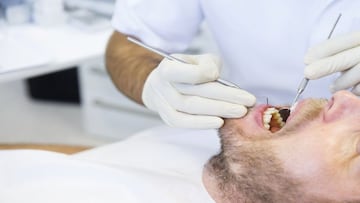Does Medicaid cover dental? How can I find a clinic that accepts Medicaid?
Dentists vests have been on the decline in the US for more than two decades, partly because many low-income people do not have dental insurance.


Medicaid is a free or low-cost health insurance plan that provides coverage to low-income people across the country. While states are not mandated to include dental coverage for adults, they are required to provide it for children under Medicaid and the Children's Health Insurance Program.
Until the Affordable Care Act was passed, which included funding to allow states to expand Medicaid to include dental services, visits to the dentist had been on a fourteen-year decline since 1997. From 2013 to 2016, visits began to increase, in part because of the expansion in coverage. However, with states allowed to decide whether or not to include dental services in Medicaid plans, many beneficiaries struggle to see the dentist regularly. A 2018 study found that low-income individuals in the US were forty percent less likely to have seen a dentist in the last year, compared to the high-income individuals. This finding helps to explain the large numbers of people who suffer from teeth and gum diseases.
According to the Center on Health Care Strategies (CHSC), more than forty percent of people between the ages of 20 and 64 struggle with untreated tooth decay. The Centers for Disease Control and Prevention also reported that a fifth of people over sixty-five have lost all their teeth, a startling fact when considering that two-thirds of Medicare beneficiaries do not have access to a dental insurance plan.
What states offer dental care as a part of Medicaid?
Though the Affordable Care Act offered federal funds to states to expand plan options to include dental services, many did not accept the money. In 2021, forty-six provide coverage for dental services in some capacity. The CHCS undertook a project to understand the dental benefits offered to Medicaid members across the US and divided the types of benefits into three categories: extensive, limited, and emergency.
The CHCS describes “extensive benefits” as “a comprehensive mix of services, including more than 100 diagnostic, preventive, and minor and major restorative procedures approved by the ADA [American Dental Association]; per-person annual expenditure cap is at least $1,000.”
Limited benefits refer to programs that only cover less than “100 diagnostic, preventive, and minor restorative procedures,” approved by the ADA.
While emergency coverage, will only cover the costs of urgent dental needs to provide relief from pain, but the procedures covered tend to vary from state to state.
According to the CHCS, nineteen states and the District of Colombia offer extensive benefits to those on Medicaid:
- California
- Connecticut
- District of Colombia
- Idaho
- Iowa
- Illinois
- Massachusets
- Montana
- New Jersey
- New Mexico
- New York
- North Carolina
- North Dakota
- Ohio
- Oregon
- Rhode Island
- Washington
- Wisconsin.
An additional seventeen states, including Colorado, Michigan, and Virginia offer limited dental coverage to those on Medicaid. Florida, Georgia, Hawaii, Texas, and eight other states only cover emergency procedures. Alabama, Arizona, Delaware, and Tennessee provide no dental coverage through Medicaid.
How to find a dental appointment with someone who accepts Medicaid?
Finding an appointment is primarily based on the level of dental coverage provided in your state. For those with no coverage or emergency-only, finding a provider who accepts Medicaid can be very difficult.
Related stories
In Alabama, there are various dental clinics around the state that provide coverage to those without insurance. According to Need Help Paying Bills, many of these clinics will only charge a patient if they know the person can pay. This website has compiled lists of free dental includes in most states and could be a good place to begin your search.
In California, the state has provided a tool that allows receiving Medicaid to find a dentist or specialist in their area.